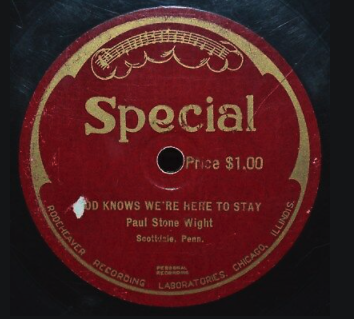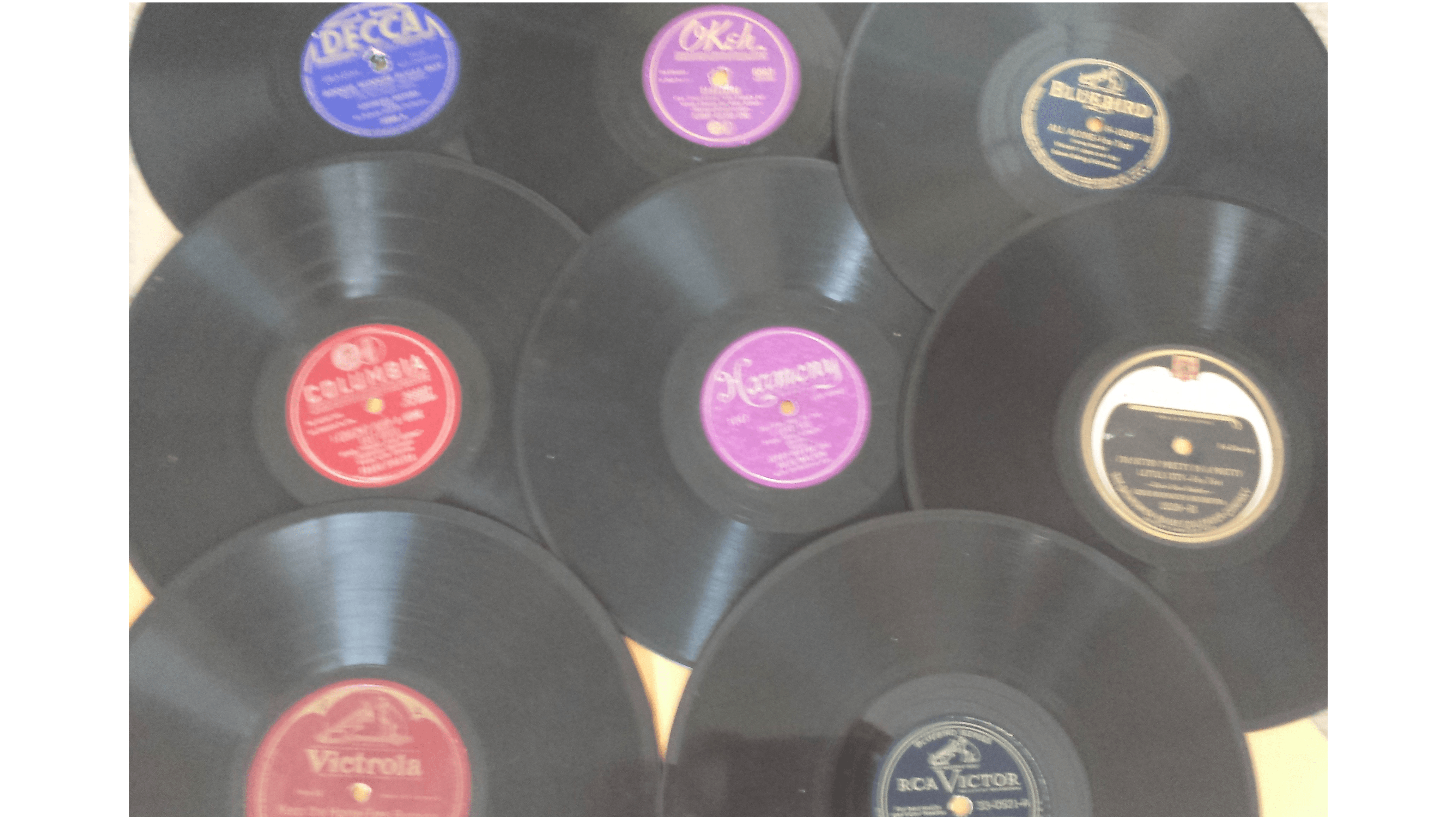The author of this website is providing this information for historical purposes and condemns the KKK and other modern variations of the same debunked ideas and themes. He neither owns any of these records nor has an interest in collecting them. He obtained images elsewhere on the internet such as ebay.
In the 1920s, there was a resurgence of the Klan. As can be expected, they used the new medium radio to spread their hate and gain new members. They also took advantage of the popularity of records and produced their own under several different labels. These are described below.
Table of contents
100% Label
The price of the record was $1.00 to $1.10. These were made by W. R. Rhinehart out of Muncie, Indiana. The address was 505 E. Willard Street. These were recorded by W.R. and his brother Charles and then custom pressed by the Starr Piano Records out of Indiana.
This can be in a black, white, or red label.
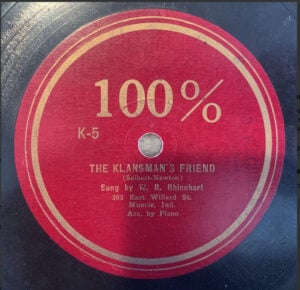
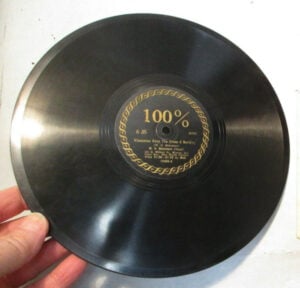

KKK Label
Self-explanatory. Has KKK on the front with a fiery cross.
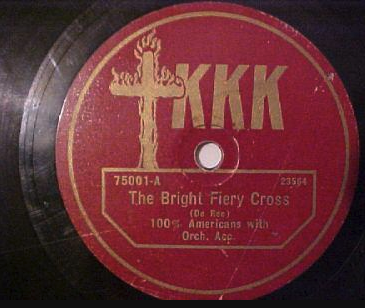
Special Label
Homer Rodeheaver was a well-known evangelist preacher who released dozens of sacred songs and sermons. He also, quietly, on the side, produced a series of racially inflammatory records for the Ku Klux Klan. Now known as the “K-Series”, this KKK line would eventually be handled by the Gennett company of Richmond, Indiana, but the first few were produced in Rodeheaver’s Chicago studios.
This rare recording is on his Special record label, with fine print reading “Personal Recording”. There are no designated catalog numbers.
